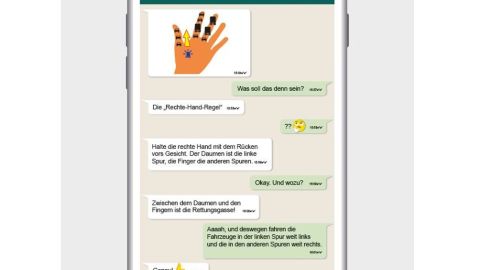The emergency lane - many people are familiar with it from driving on the highway or from driving lessons. Especially in the event of accidents or other dangerous incidents, it plays a crucial role in ensuring that emergency services reach their destination quickly. This allows them to work faster and help people. In addition, it also has the positive effect that the traffic jam often eases all the more quickly if the fire department, police and co. are allowed through quickly.
The formation of a rescue lane is regulated in the Highway Code, more precisely in §11. It states that a rescue lane must be formed in the event of gridlocked traffic on freeways and on roads outside built-up areas that have more than two lanes in one direction.
It is formed between the two lanes; if there are more than two lanes, the lane is formed between the left-hand lane and the lane to the right of it.
What about the hard shoulder...
If there is a hard shoulder on the right marked with a solid line, be careful, this is not intended for forming the lane or even for driving past. Even driving over the line is punishable by a fine. The reason for this is that there should be space for vehicles that are no longer roadworthy. They can go there until help arrives. In addition, the hard shoulder may have to be used by supply vehicles or to divert traffic. Therefore: stay in your lane.
In individual cases, if the formation of rescue gases is not reasonable or is not possible due to special circumstances, this is also used by emergency services. The following applies here: Signs and instructions from the police must be followed!
So, enough with the theory! We hope that there will be as few emergency lanes as possible and look forward to an exciting European Championship 2024. Please share the information and drive carefully, Team 110 is always there for you!
For easy memorization, here is a small graphic that illustrates the whole thing:
